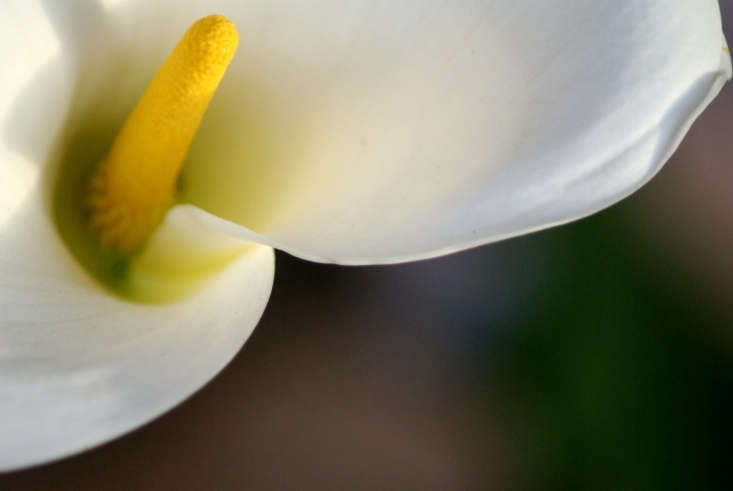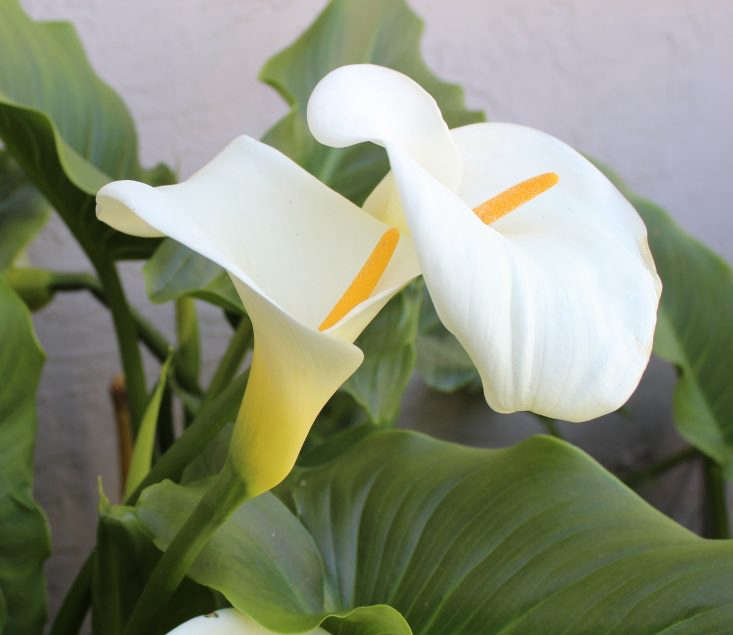Calla Lily, Zantedeschia aethiopica: Bride’s Bouquet
Sculptural and startlingly exotic, the Calla lily (also known as Arum lily) is both an intriguing and mesmerizing plant, with its funnel-shaped flower and glossy green foliage. Although most often seen in bridal bouquets or floral arrangements, this easy-to-care-for tuberous perennial can be a stunning plant to grow—whether indoors or out.

Calla lily’s elegant flowers are not really lilies at all; they belong to the Araceae family with a fleshy spike (or spadix) and dramatic flower which is in fact a bract (a modified leaf). Native to Africa, the flower was incorrectly named as a lily by Swedish botanist Carolus Linnaeus, and the name has stuck.

The Calla lily became an object of fascination for photographers and artists in the early 20th century, most notably by Georgia O’Keeffe whose 1927 White Calla Lily painting sold for a record-breaking $9m in 2015. Her obsession with the flowers prompted The New Yorker to run a cover of O’Keeffe in 1929 describing her as “The Lady of the Lily.”

Although it’s the pure white trumpets that are best known, Calla lilies come in varying shades of yellow, orange, pink, green and purples which can be almost black.
Cheat Sheet

- The white form – Zantedeschia aethiopica – is hardy and straight-forward to grow in the garden where it can reach 3ft in height and a couple across, flowering in late spring or early summer.
- Calla lilies can also be grown as a marginal aquatic on the edges of ponds or garden streams in up to one foot of water.
- The plant is toxic to both dogs and cats – causing irritation and sickness.
Keep It Alive

- If growing outdoors, plant in spring in well-drained fertile soil in either full sun or part shade and keep watered in dry spells.
- Hardy varieties can be left to overwinter while tender tubers can be lifted and stored in a dark-frost free place, before being replanted in spring.
- For houseplants, keep the pot moist and repot in fresh compost at the start of the growing season.

Calla lilies can be propagated by division in spring, by lifting and cutting through the rhizome and then replanting the sections at least 4 inches deep.
N.B.: See more of our favorite Tubers and Perennials in our Garden Design 101 guides. And don’t miss:
- Perennials: A Field Guide to Planting, Design, and Care.
- Calla Lily: Rethinking a Bridal Bouquet Flower.
- Bulbs & Tubers: A Field Guide to Planting, Design, and Care.
- Shopper’s Diary: Behind the Scenes at Winston Flowers in Boston.
Finally, get more ideas on how to successfully plant, grow, and care for calla lily with our Calla Lily: A Field Guide.
Interested in other bulbs and tubers for your garden or indoor space? Get more ideas on how to plant, grow, and care for various bulbs and tubers with our Bulbs & Tubers: A Field Guide.












Have a Question or Comment About This Post?
Join the conversation (0)